constituent assembly of india debates (proceedings)- volume vii
constituent assembly of india debates (proceedings)- volume vii
constituent assembly of india debates (proceedings)- volume vii
You also want an ePaper? Increase the reach of your titles
YUMPU automatically turns print PDFs into web optimized ePapers that Google loves.
The Draft Constitution has been before the public for eight months. During this long time friends,<br />
critics and adversaries have had more than sufficient time to express their reactions to the provisions<br />
contained in it. I dare say that some <strong>of</strong> them are based on misunderstanding and inadequate<br />
understanding <strong>of</strong> the Articles. But there the criticisms are and they have to be answered.<br />
For both these reasons it is necessary that on a motion for consideration I should draw your attention<br />
to the special features <strong>of</strong> the Constitution and also meet the criticism that has been levelled against it.<br />
Before I proceed to do so I would like to place on the table <strong>of</strong> the House Reports <strong>of</strong> three Committees<br />
appointed by the Constituent Assembly #(1) Report <strong>of</strong> the Committee on Chief Commissioners' Provinces<br />
(##)(2) Report <strong>of</strong> the Expert Committee on Financial Relations between the Union and the States, and<br />
(###)(3) Report <strong>of</strong> the Advisory Committee on Tribal Areas, which came too late to be considered by<br />
that Assembly though copies <strong>of</strong> them have been circulated to Members <strong>of</strong> the Assembly. As these reports<br />
and the recommendations made therein have been considered by the Drafting Committee it is only<br />
proper that the House should formally be placed in possession <strong>of</strong> them.<br />
---------------------------------------------------------------<br />
# Appendix A ## Appendix B ### Appendix C (1 to 3)<br />
---------------------------------------------------------------<br />
Turning to the main question. A student <strong>of</strong> Constitutional Law if a copy <strong>of</strong> a Constitution is placed in<br />
his hands is sure to ask two questions. Firstly what is the form <strong>of</strong> Government that is envisaged in the<br />
Constitution; and secondly what in the form <strong>of</strong> the Constitution? For these are the two crucial matters<br />
which every Constitution has to deal with. I will begin with the first <strong>of</strong> the two questions.<br />
In the Draft Constitution there is placed at the head <strong>of</strong> the Indian Union a functionary who is called<br />
the President <strong>of</strong> the Union. The title <strong>of</strong> this functionary reminds one <strong>of</strong> the President <strong>of</strong> the United States.<br />
But beyond identity <strong>of</strong> names there is nothing in common between the forms <strong>of</strong> Government prevalent in<br />
America and the form <strong>of</strong> Government proposed under the Draft Constitution. The American form <strong>of</strong><br />
Government is called the Presidential system <strong>of</strong> Government. What the Draft Constitution proposes is the<br />
Parliamentary system. The two are fundamentally different.<br />
Under the Presidential system <strong>of</strong> America, the President is the Chief head <strong>of</strong> the Executive. The<br />
administration is vested in him. Under the Draft Constitution the President occupies the same position as<br />
the King under the English Constitution. He is the head <strong>of</strong> the State but not <strong>of</strong> the Executive. He<br />
represents the Nation but does not rule the Nation. He is the symbol <strong>of</strong> the nation. His place in the<br />
administration is that <strong>of</strong> a ceremonial device on a seal by which the nation's decisions are made known.<br />
Under the American Constitution the President has under him Secretaries in charge <strong>of</strong> different<br />
Departments. In like manner the President <strong>of</strong> the Indian Union will have under him Ministers in charge <strong>of</strong><br />
different Departments <strong>of</strong> administration. Here again there is a fundamental difference between the two.<br />
The President <strong>of</strong> the United States is not bound to accept any advice tendered to him by any <strong>of</strong> his<br />
Secretaries. The President <strong>of</strong> the Indian Union will be generally bound by the advice <strong>of</strong> his Ministers. He<br />
can do nothing contrary to their advice nor can he do any thing without their advice. The President <strong>of</strong> the<br />
United States can dismiss any Secretary at any time. The President <strong>of</strong> the Indian Union has no power to<br />
do so long as his Ministers command a majority in Parliament.<br />
The Presidential system <strong>of</strong> America is based upon the separation <strong>of</strong> the Executive and the Legislature.<br />
So that the President and his Secretaries cannot be members <strong>of</strong> the Congress. The Draft Constitution<br />
does not recognise this doctrine. The Ministers under the Indian Union are members <strong>of</strong> Parliament. Only


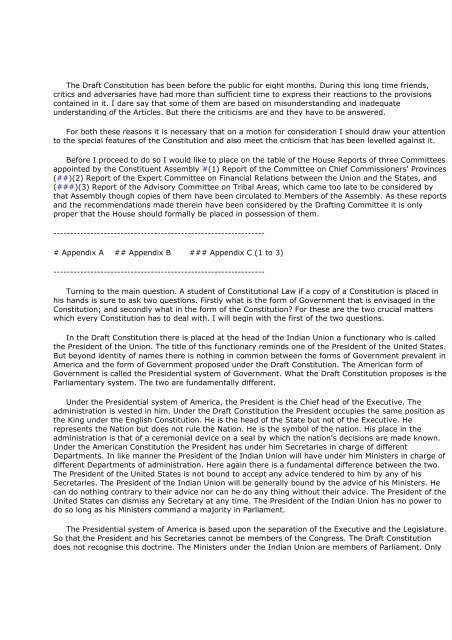
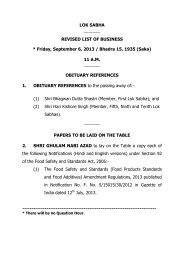
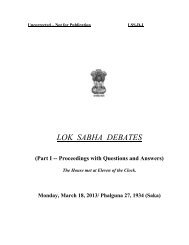

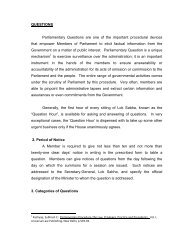
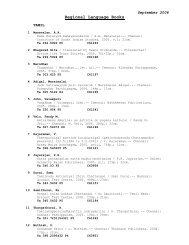

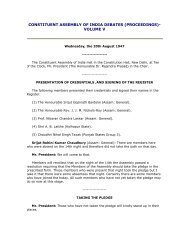
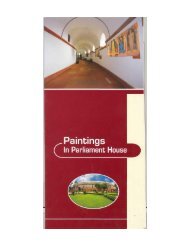
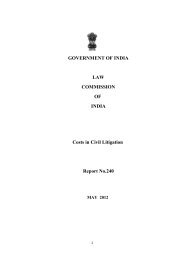
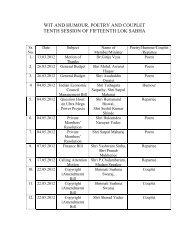
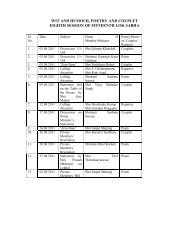

![gÉÉŌ A.]ÉŌ. xÉÉxÉÉ](https://img.yumpu.com/8015720/1/190x245/geeo-aeo-xeexee.jpg?quality=85)
